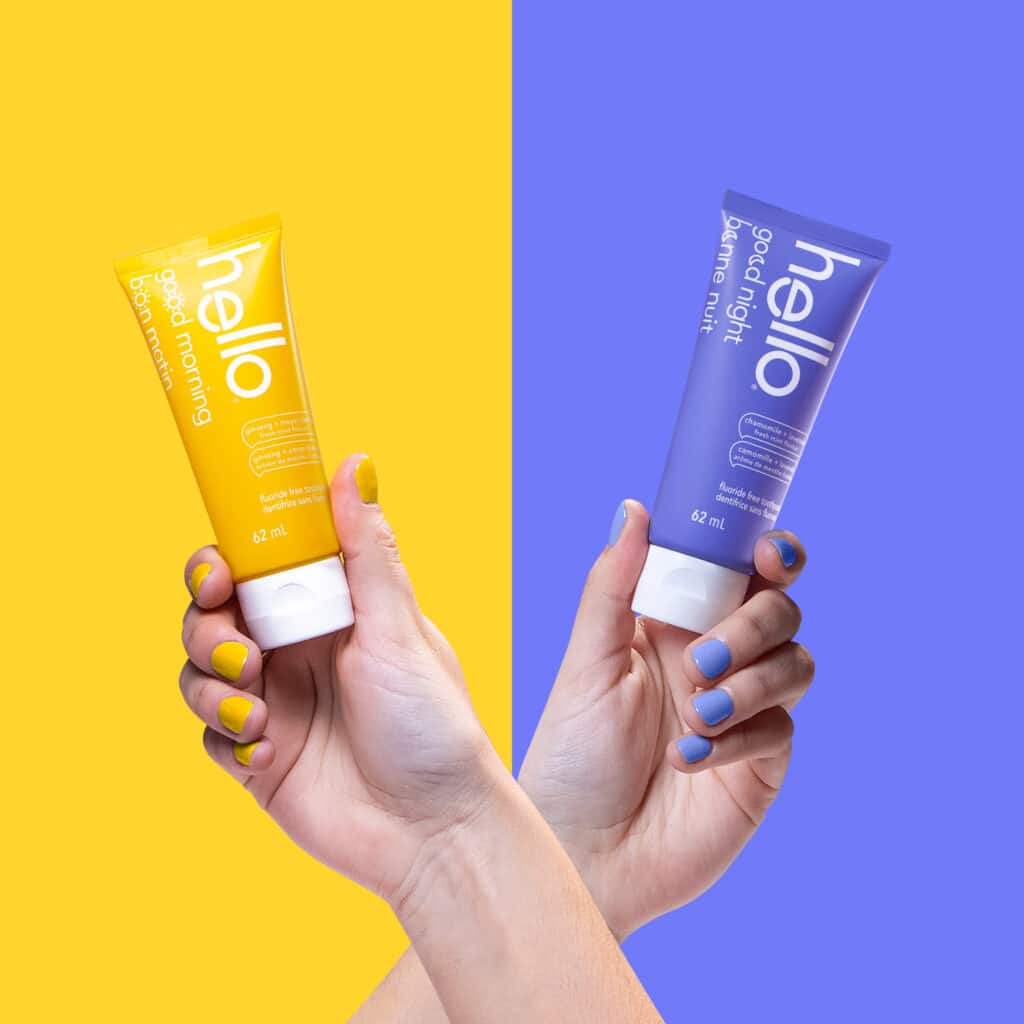I LOVE to brush my teeth. During the day, it’s my favourite way to wake, perk, and freshen up in a jiff-made even better when I slide some lip balm on after, and spritz myself with perfume. Before bed, I go through the ritual of giving my pearlies a good going over with a brush and a floss, knowing I’m removing bacteria that can otherwise lurk and breed in my mouth and gut, in part because when we sleep, we produce less of the saliva that washes bacteria off teeth, and that can accumulate and do damage to teeth. Brushing your teeth before sliding between the sheets is an easy habit to form that can have wide-ranging health benefits.
As an enthusiastic fan of good dental hygiene, I’ve been following the market entry of Hello Products and other brands that position themselves as natural alternatives to drugstore toothpaste, and which have a variety of formulas for different applications. Hello has a range that includes antiplaque, whitening, and sensitive formulas—with or without fluoride. For those who like an old-school menthol mouth there’s a Freakin’ Fresh, made with hemp and farm-grown mint. It whitens naturally, and has no artificial sweeteners, flavors, or dyes.

Most recently, I’ve been testing new Hello toothpastes meant specifically for morning and evening use. The A.M. option is brightly flavoured with Meyer lemon, mint, ginseng, camu camu, and guarana; the evening offering a dreamy mix of lavender and mint. I like the clear, un-muddy flavours of both, and that neither has the gritty feel that some other toothpaste has. To be clear, I choose the toothpaste flavour depending on how I feel, and not what the clock tells me. So far, the teeth police haven’t knocked on the door after I used the luscious lemon version before jumping into bed. Call me a dental iconoclast:)
Neither one has fluoride. I’m not entirely sure how I feel about that. Health Canada, for example, says since testing of the safety and benefits of fluoride in toothpastes began in the 1940’s, researchers have not found any risks, apart from dental fluorosis. That means white spots on the teeth that last into adulthood. To be fair, I myself have these from taking large amounts of life-saving antibiotics as a child. On the other hand, Harvard researchers suggest there are alternatives to fluoride in toothpaste for reducing cavities within a population.
I plan to ask my dentist about fluoride in toothpaste when I see him next month, and I’ll report back after the visit. One question I have if whether it’s necessary for me to use a fluoride toothpaste at my age – 64 – especially given that drinking water in my city is fluoridated. In the meantime, I’m enjoying adding another delicious element to my daily self-care routine. How about you- where does brushing your teeth rate on your heathy habits list?





